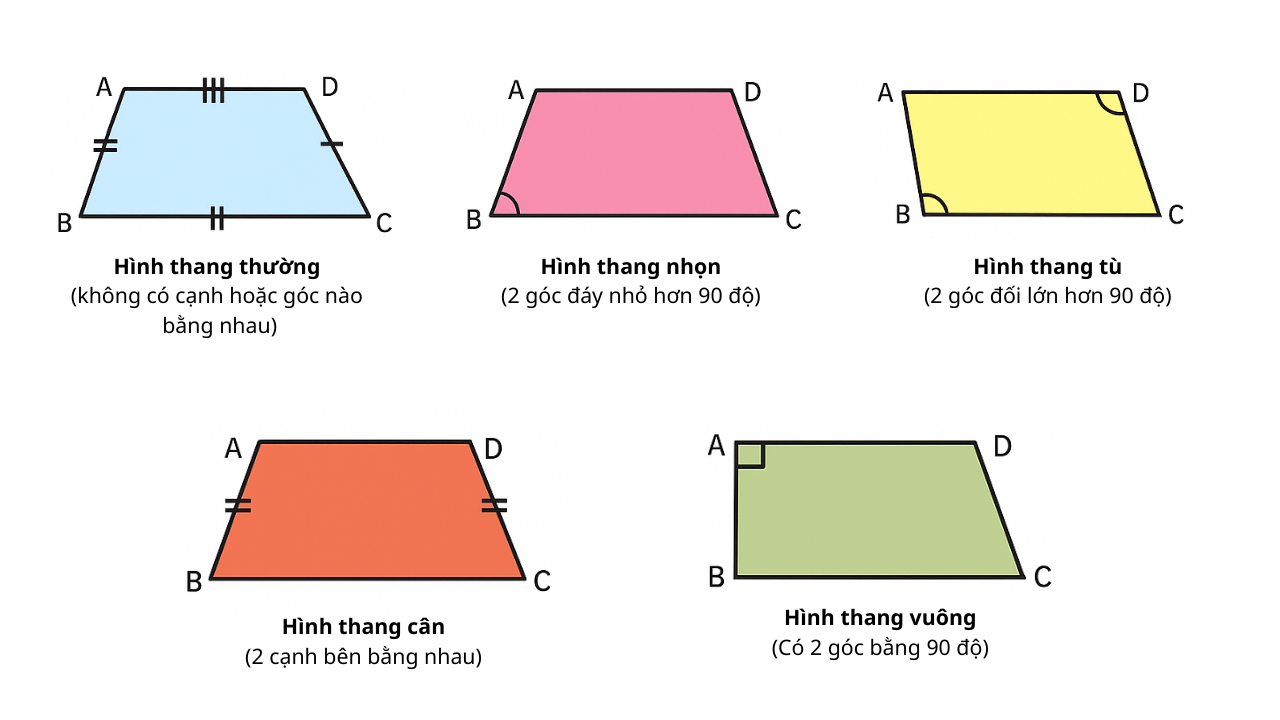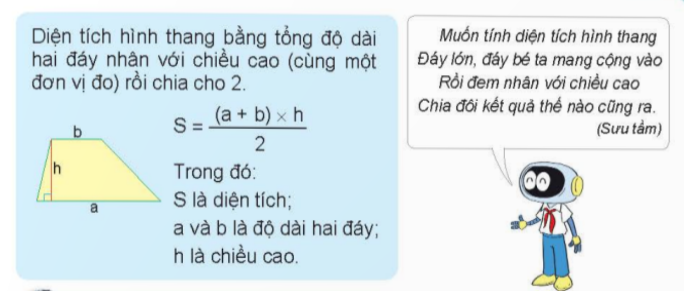According to the textbook Connecting knowledge with life, Math 5, volume 1, lesson 26, a trapezoid in plane geometry is a convex quadrilateral with two opposite sides parallel to each other.

Trapezoids can be distinguished by angle or side criteria.
| Distinguish by angle | Differentiate by edge |
| Right trapezoid (trapezoid with 1 side perpendicular to 2 bases) | Regular trapezoid (no equal sides or angles, only 1 pair of parallel opposite sides) |
| Acute trapezoid (trapezoid with 2 base angles less than 90 degrees) | Isosceles trapezoid (trapezoid has 2 equal angles adjacent to a base, 2 equal sides, 2 equal diagonals, can be inscribed in a circle) |
| Obtuse trapezoid (trapezoid with 2 opposite angles greater than 90 degrees) |

According to the textbook Connecting knowledge with life, Math 5, volume 1, lesson 26, the area of a trapezoid is equal to the total length of the 2 bases multiplied by the height (same unit of measurement) then divided by 2.
| S = ½ [(a+b) xh] |
In there:
S: Area of trapezoid
a and b are the lengths of the two bases
h is height
For example: Calculate the area of a trapezoid knowing: The length of the 2 bases are 4cm and 6cm respectively, the height is 3cm
Answer: S = ½ [(4+6) x 3] = 15 cm 2
No. Even though they are 2 special trapezoids, there is only one formula to calculate a trapezoid.
For problems without enough data on the length of the 2 bases and the height, it is impossible to calculate the area of the trapezoid.
Length and area must be converted to the same unit before calculation.
(Synthetic)
Source: https://vietnamnet.vn/cong-thuc-tinh-dien-tich-cac-loai-hinh-thang-chi-tiet-2445259.html


![[Photo] Prime Minister Pham Minh Chinh chairs the Conference to deploy the National Target Program on Drug Prevention and Control until 2030](https://vphoto.vietnam.vn/thumb/1200x675/vietnam/resource/IMAGE/2025/10/09/1759990393779_dsc-0495-jpg.webp)



![[Photo] Prime Minister Pham Minh Chinh chairs a meeting of the Government Standing Committee on overcoming the consequences of natural disasters after storm No. 11](https://vphoto.vietnam.vn/thumb/1200x675/vietnam/resource/IMAGE/2025/10/09/1759997894015_dsc-0591-jpg.webp)
























































































Comment (0)